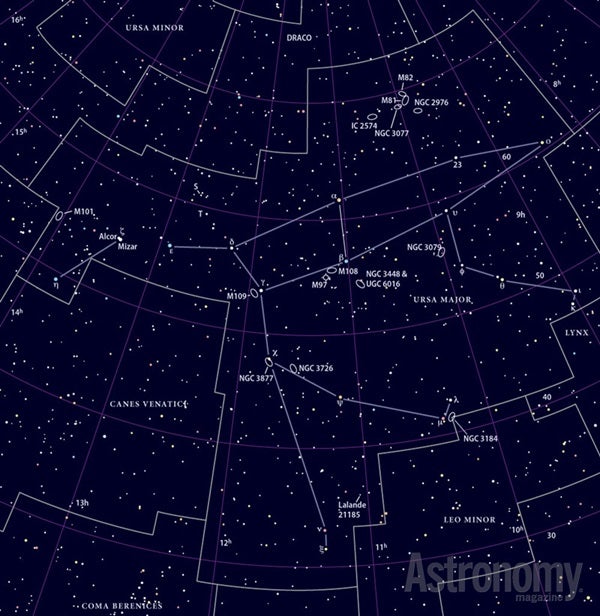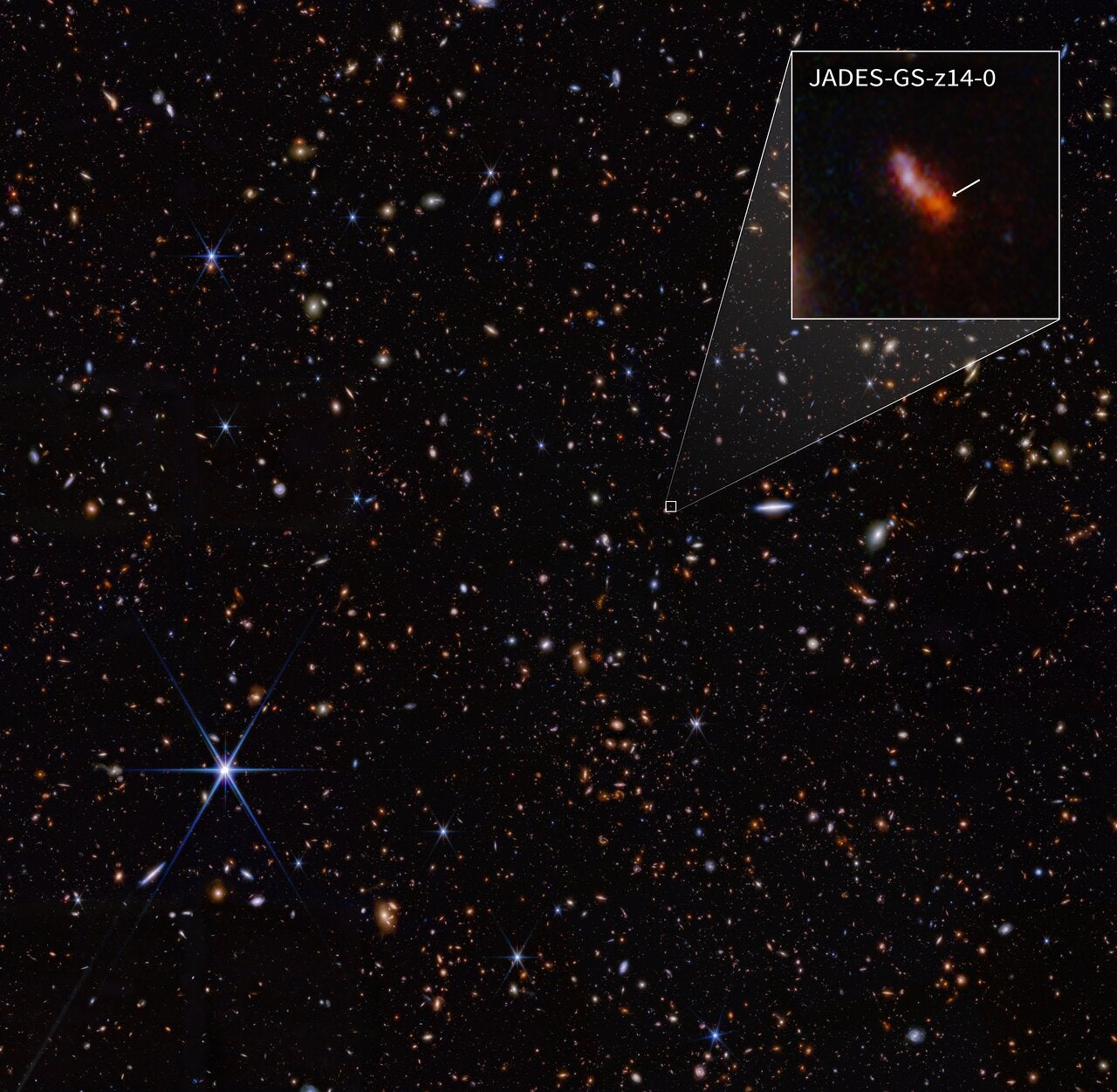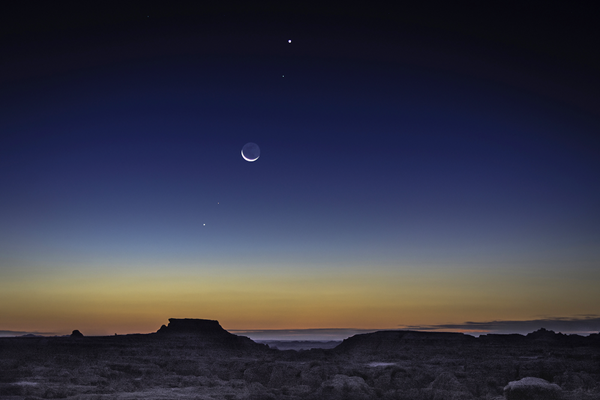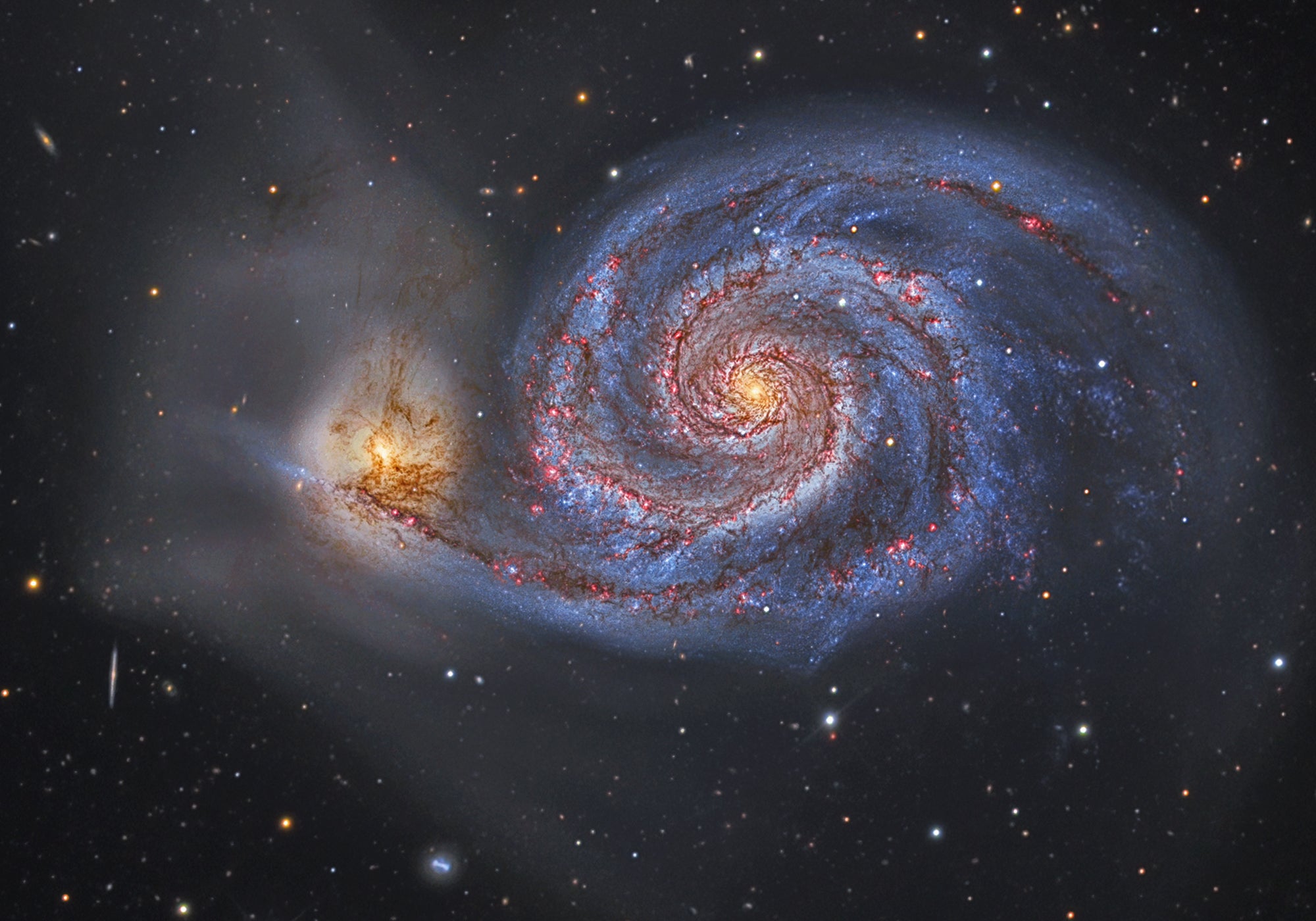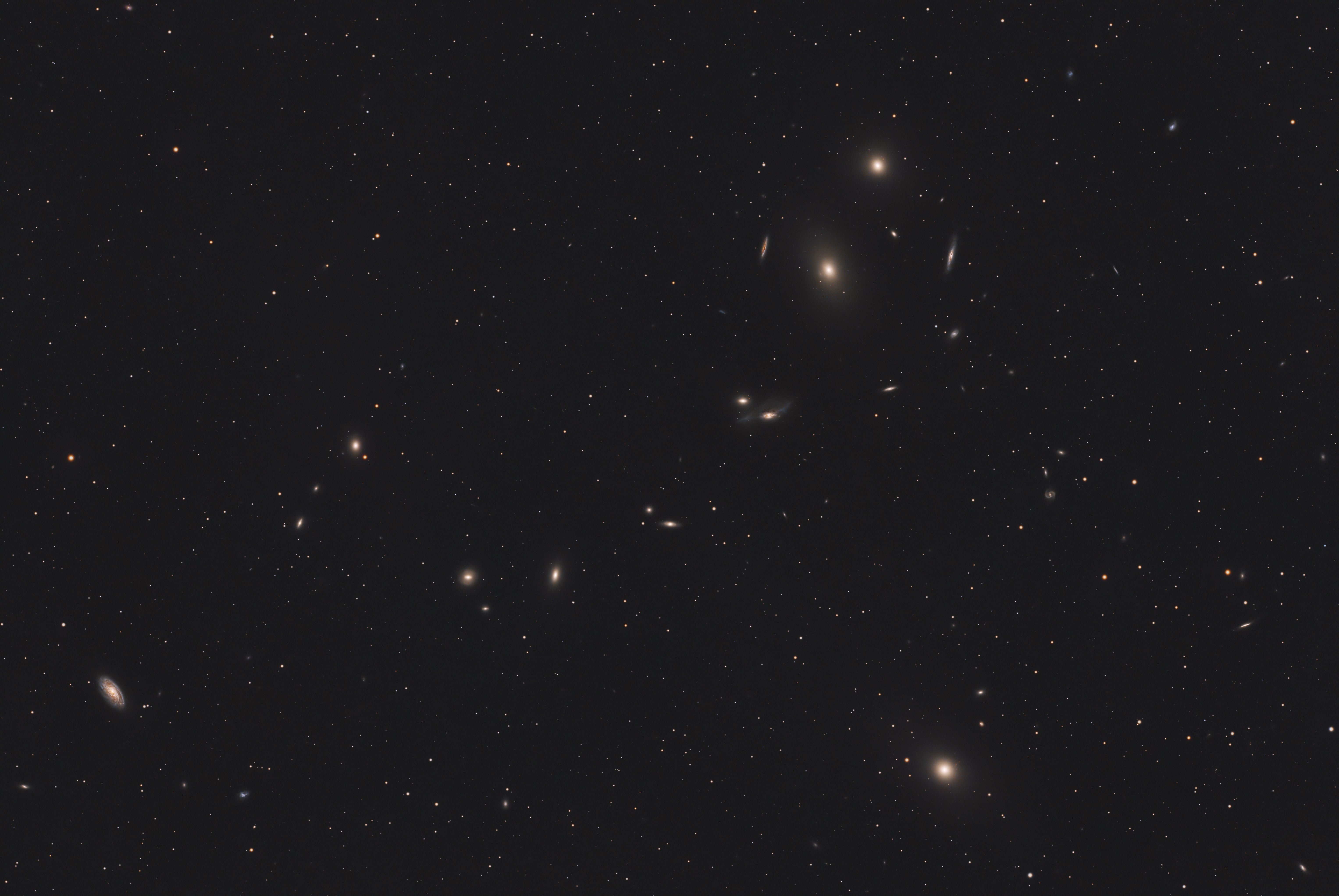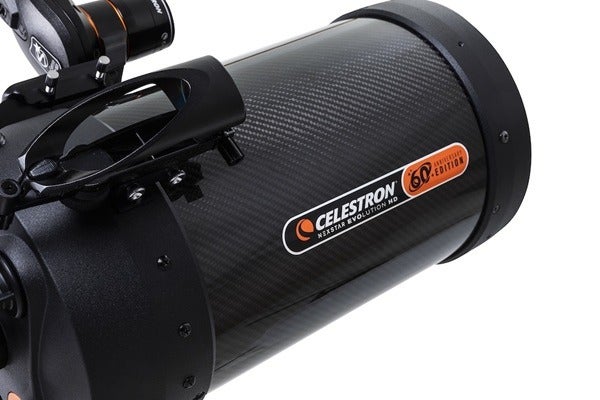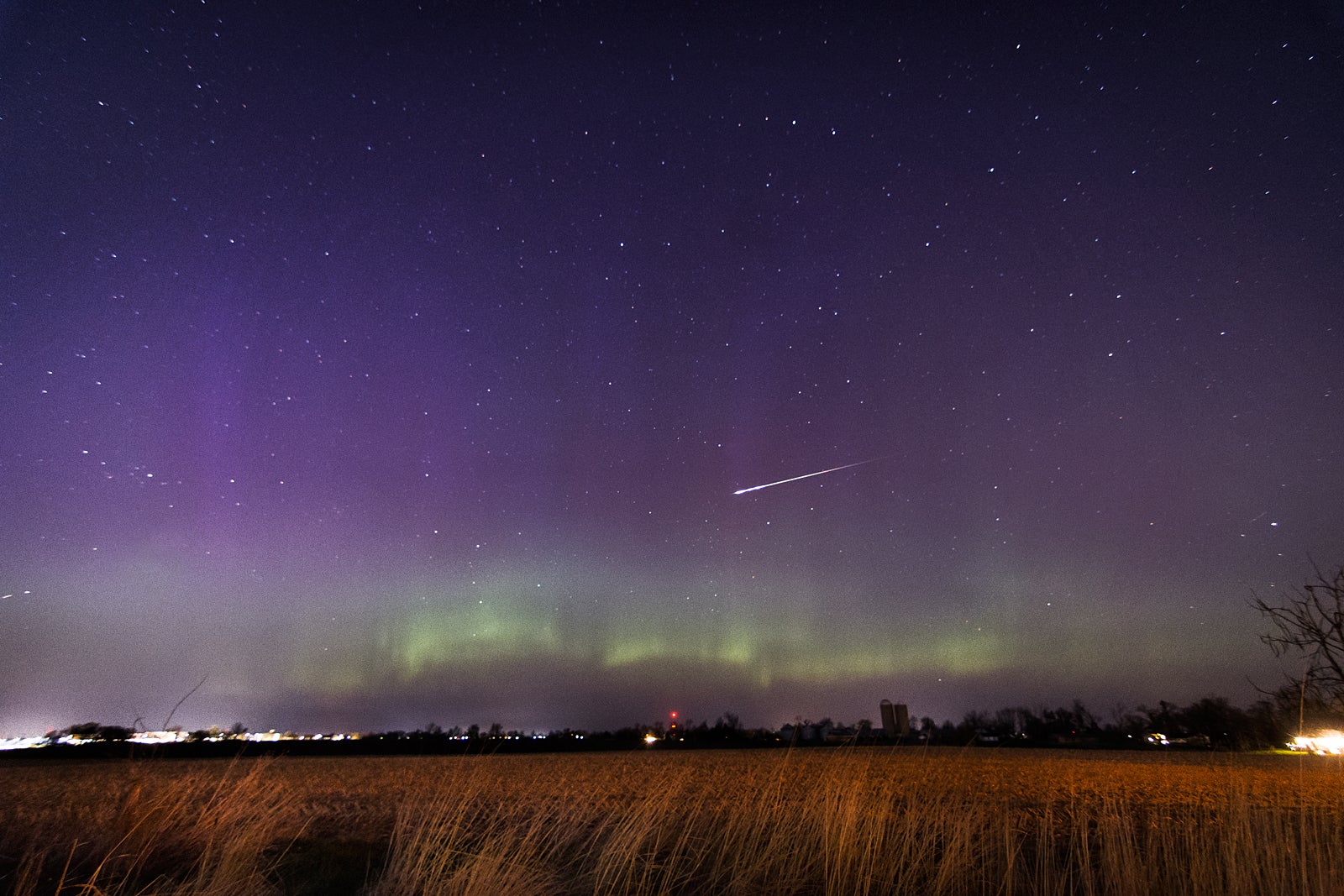Targets for March 6–13, 2014
Naked eyes: The constellation Sextans
Small telescope: The Cigar Galaxy (M82)
Large telescope: Spiral galaxy NGC 3077
This week’s naked-eye object is the ultra-faint constellation Sextans the Sextant. This is one of seven constellations still in use that German astronomer and celestial cartographer Johannes Hevelius invented. In 1687, he included this group in the star atlas Firmamentum Sobiescianum sive Uranographia.
Only three constellations border Sextans: Crater the Cup, Hydra the Water Snake, and Leo the Lion. Sextans lies directly south of the Sickle asterism in Leo.
Sextans lies in the mid-range of constellation sizes. It ranks as the 47th largest of the 88 constellations that cover the sky. It envelops 314 square degrees; that’s 0.75 percent of the sky.
While Sextans falls in the middle of the size range, it ranks at the very bottom in terms of star brightness per unit area — number 88. This meager constellation contains no named star and none of the 200 brightest stars. Sextans’ brightest star, Alpha (α) Sextantis, glows dimly at magnitude 4.5. In all, Sextans contains only five stars brighter than magnitude 5.5.
The best single date to see Sextans is February 22. Its visibility peaks in late winter when it lies highest in the sky. Through March, its part of the sky lies opposite the Sun, and it’s visible most of the night. The worst time to look for Sextans is around August 26. That’s when it lies in the same direction as the Sun.
This constellation is visible by people on most of Earth’s surface. It’s completely visible from areas south of latitude 79° north to those north of latitude 83° south.
Sextans has only one meteor shower associated with it, the Daytime Sextantids, which peak September 29. This shower usually is poor, with hourly rates of five or less. In 1957, however, observers reported a peak of 30 meteors per hour.
Bursting with activity
This week’s small telescope target is the Cigar Galaxy in Ursa Major. Astronomers catalog it as M82 and NGC 3034.
Last week, I talked about Bode’s Galaxy (M81). Well, point your telescope 37′ due north of M81, and you might think you’re seeing a galaxy explode. Not exactly. What you’ve found is M82, the classic example of a starburst galaxy. It shines at magnitude 8.4 and measures 12′ by 5.6′.
The core of M82 is a complex of star-forming regions that dwarfs our Milky Way’s Orion Nebula (M42). M82’s appearance is due to a close interaction with M81 between 500 million and 600 million years ago. Radio telescope maps show a great deal of gas surrounding both objects.
Amateur astronomers call M82 the Cigar Galaxy because of its appearance through a small telescope. It appears four times as long as wide, and its long axis orients east-southeast to west-northwest. The galaxy’s brightest part lies east of center. Farther east, a dark lane cuts diagonally across M82’s minor axis (the short dimension).
M82 has a greater surface brightness than most galaxies. To illustrate what this means, compare M82 to M81 in an eyepiece that just frames them both. Although M82 shines a magnitude and a half fainter than M81, it appears about as bright. Use high magnification to reveal its details, even on less-than-perfect nights. This technique doesn’t work on low-surface-brightness galaxies.
The third one’s the charm
This week’s large telescope target is spiral galaxy NGC 3077, which also lies in Ursa Major.
This deep-sky object lies 1.1° southeast of the Cigar Galaxy. If, therefore, your telescope/eyepiece combination gives you a bit more than a 1° field of view, you’ll see NGC 3077, M82, and M81 all at once, albeit at low power.
Through an 11-inch or larger scope, magnitude 9.8 NGC 3077 displays a wide, bright nucleus. It’s an oval with faint outer layers that most observers have no trouble seeing. The galaxy measures 5.5′ by 4.1′.
One of the features of this galaxy is an often-described “ray,” best seen at magnifications above 300x. From what I had read, I expected it to be an extension to the northeast. What I observed, however, appears short, thick, and quite faint.
NGC 3077 may be a satellite galaxy of M81. The two objects lie only 200,000 light-years away from each other.
Two 8th-magnitude stars lie near NGC 3077. One, less than 4′ away, lies in the direction of M82. The other, 10′ distant, lies just off a line that connects NGC 3077 with M81.
Expand your observing at Astronomy.com
StarDome
Check out Astronomy.com’s interactive StarDome to see an accurate map of your sky. This tool will help you locate this week’s targets.
The Sky this Week
Get a daily digest of celestial events coming soon to a sky near you.
Observing Talk
After you listen to the podcast and try to find the objects, be sure to share your observing experience with us by leaving a comment at the blog or in the Reader Forums.

